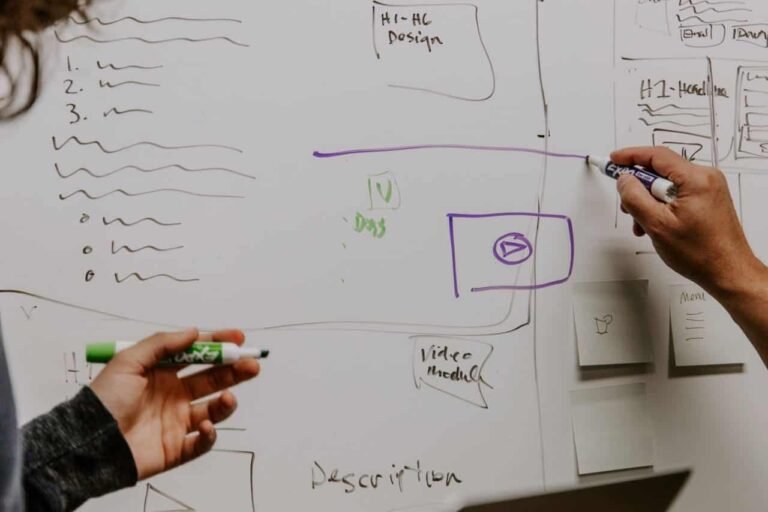Spatial awareness in a world of small screens – why does it matter?
It is a wet autumnal evening and you look down to a soggy pavement and see a yellow leaf that you have never seen before. Examining it more closely, you see that is is curved in shape and almost rubbery in texture. It looks like something that would have been imprinted into an ancient fossil millions of years ago.
A new discovery can bring joy, curiosity and questions – and the more that we become aware of the space that we inhabit and work in, the more possibility there is for new discovery. But is today’s world of technology limiting the scope of our spatial awareness and if yes, why is it important that we learn how to expand it?
How technology limits spatial awareness
Anyone who spends more than a few minutes a day looking at a computer screen or mobile phone, will be only too aware of how easy it is for a device to draw you in. By looking at a screen for hours a day, our vision and thinking can unknowingly be sucked into a different world, as our gaze becomes fixed by what the thousands of pixels are showing us.
The danger with that is unless kept in check, our peripheral vision and ability to see things beyond our little ‘screen-world’ starts to diminish and our awareness of what’s going on outside of our little bubble can shrink too. If you walk down any street today, how often do you have to divert your path because someone walking towards you is so engrossed in looking at their mobile phone, that they don’t even see you coming?
Why shrinking spatial awareness matters
In addition to helping you to avoid walking into other pedestrians (or vehicles), spatial awareness matters because without understanding your environment and how you fit into it, creativity and innovation become very limited. It’s also difficult to realise your full potential if most of your waking hours are spent stuck looking at a screen.
If you imagine an actor getting into character on stage, to get the most out of that character, whether it’s happiness, sadness, anger, humour or any other mood or emotion, the actor has to use all of the space around him to the best effect. That includes not only the use of any props, but also how the actor physically uses all of his/her body within that stage space and the subtle nuances that creates within a performance.
An actor who fails to use the space on stage well, is likely to produce an average performance at best. If you translate that into the work place or the world of personal development, in order to get the most out of any situation or to find new ways of thinking, working and interacting with others through discovery and experimentation is important. Furthermore, developing an awareness of how much you are allowing yourself to discover new things is absolutely key in being able to develop your own spatial awareness.
How can I develop my spatial awareness in practice?
To have the spatial awareness of a great actor requires an in depth understanding of how you use your body, how you walk, talk, sit, stand and so on.
The physical space that you have the potential to occupy at any given time is greater than you might think. Sitting at a desk and looking at a screen with your eyes drawn into it, your posture is likely to shrink and be drawn towards the screen. But if you stopped to do the opposite and stretched out your arms and legs, the space that you could actually occupy from your desk seat would increase dramatically.
Becoming aware of that potential to inhabit and explore more physical space allows you to examine how the brain works. If your mind is focussed on a screen most of the time, then as with your arms and legs, you might not be allowing your brain the space to stretch itself and to explore new ideas.
Similarly if you spend a lot of time with people who spend most of their time focused on screens, the potential to collaborate and grow new ideas effectively diminishes, unless everyone maintains the regular discipline of practising really stretching the way that they think.
Get out into nature
If acting school isn’t really your thing, another way of rediscovering your spatial awareness is to take a simple trip to a local park or into the countryside. Stopping to look around you to think about what you can see, hear, touch and smell can breathe new life into the senses and the way that you think.
It’s sad that for all of the good that modern technology can bring, it also has a severe numbing effect on the ability to develop and sustain the levels of spatial awareness that we all need to interact more successfully and to live happy, healthy and more sustainable lives.
However, perhaps by taking more time to unglue ourselves from our screens and engage more fully with the real physical world around us, we might be positively surprised by its lasting effect.








